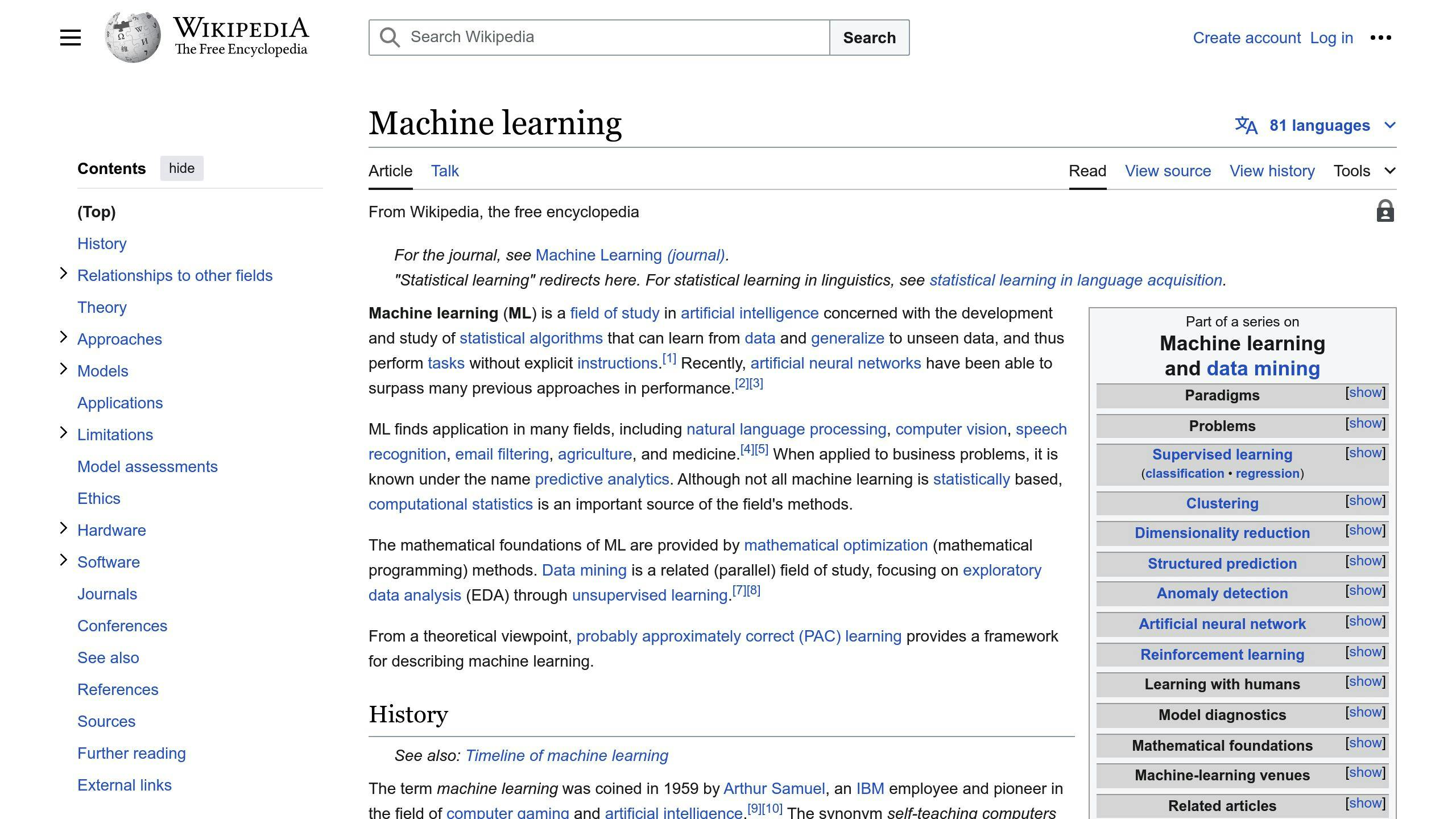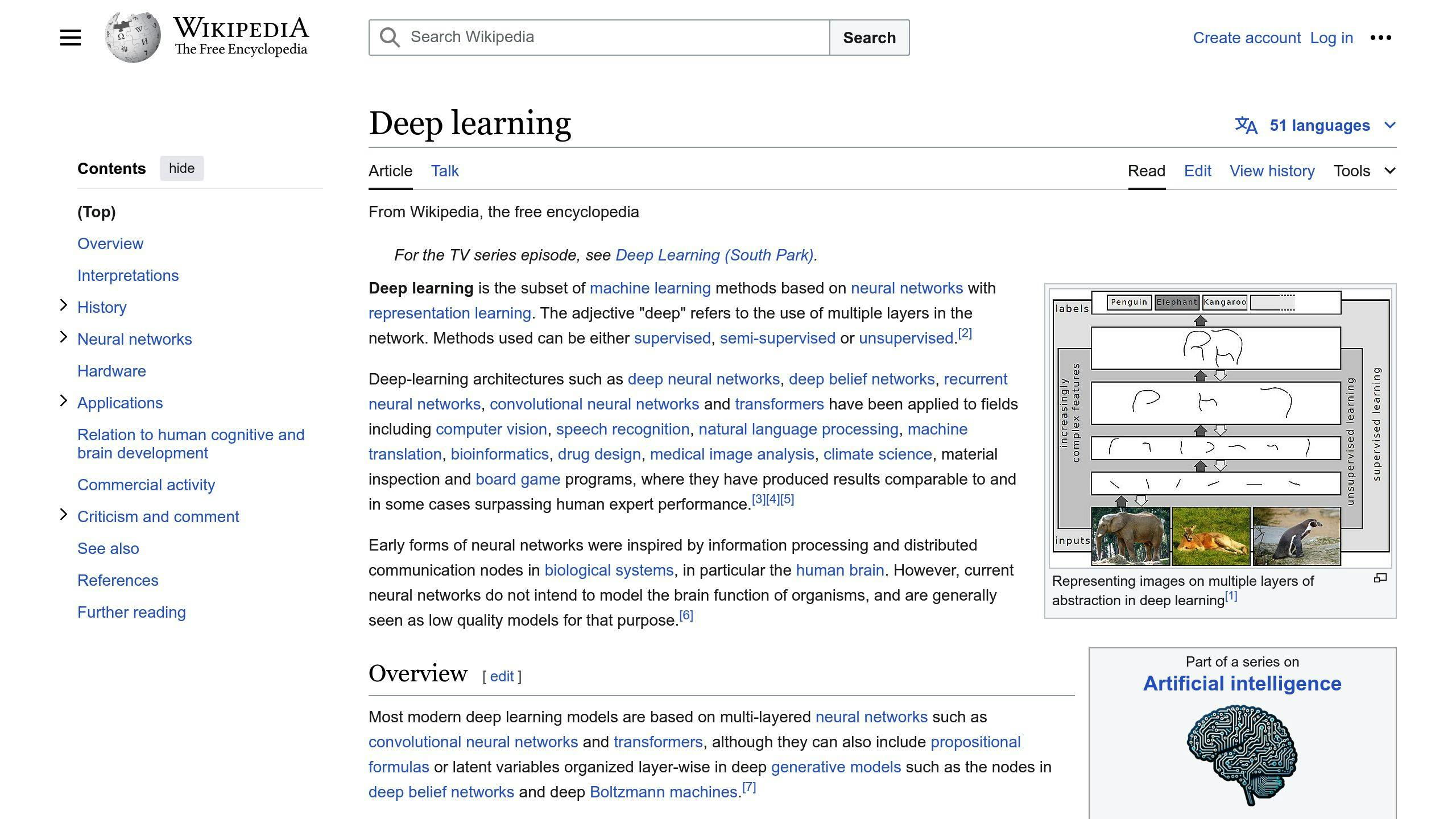Ensuring employee satisfaction is crucial for business success. AI techniques offer powerful tools to gain deeper insights into employee sentiment and preferences, enabling organizations to improve engagement, productivity, and retention.
This article explores 7 key AI techniques for measuring and enhancing employee satisfaction:
-
Natural Language Processing (NLP) for Sentiment Analysis
- Accurately detect sentiment from text feedback
- Gain real-time insights into employee emotions
- Analyze open-ended feedback for rich insights
-
Machine Learning for Predictive Analytics
- Predict employee turnover risks
- Analyze open-ended feedback for sentiment patterns
- Enable targeted interventions to improve retention
-
Pulse Surveys with AI-Driven Questioning
- Collect real-time feedback and respond promptly
- Extract deeper insights from open-ended responses
- Accurately analyze sentiment and emotions
-
AI-Powered Chatbots for Real-Time Feedback
- Provide 24/7 feedback channels for employees
- Accurately analyze sentiment and emotions
- Enable prompt response to improve engagement
-
Deep Learning for Emotion Detection
- Improve accuracy of sentiment analysis
- Predict employee engagement and disengagement risks
- Offer real-time feedback and response capabilities
-
Text Analytics for Open-Ended Feedback
- Gain deeper insights into employee thoughts and feelings
- Accurately analyze sentiment and emotions
- Develop targeted engagement strategies
-
Gamification and AI-Driven Incentives
- Predict employee engagement and preferences
- Provide real-time feedback and recognition
- Improve engagement, motivation, and retention
By leveraging these AI techniques, organizations can create a more responsive and insightful approach to understanding employee needs and preferences, ultimately driving business success through a highly satisfied and engaged workforce.
1. Natural Language Processing (NLP) for Sentiment Analysis
Understanding Employee Sentiment
Natural Language Processing (NLP) is a powerful tool for analyzing employee sentiment and emotions. By applying NLP to employee feedback, HR professionals can gain a deeper understanding of what drives employee satisfaction and identify areas for improvement.
Real-Time Insights and Response
NLP enables companies to analyze employee feedback in real-time, providing instant insights into employee sentiment. This allows HR professionals to respond promptly to concerns, addressing issues before they escalate. With NLP, companies can create a culture of open communication, where employees feel heard and valued.
In-Depth Insights from Open-Ended Feedback
NLP can analyze open-ended feedback, providing rich insights into employee sentiment and emotions. By analyzing written comments and feedback, NLP can identify subtle patterns and themes that may not be immediately apparent. This allows companies to gain a deeper understanding of what drives employee satisfaction and identify areas for improvement.
| Benefits of NLP for Sentiment Analysis | Description |
|---|---|
| Accurate Sentiment Detection | NLP can accurately detect sentiment from text, identifying patterns and themes in employee feedback. |
| Real-Time Insights | NLP enables companies to analyze employee feedback in real-time, providing instant insights into employee sentiment. |
| In-Depth Insights | NLP can analyze open-ended feedback, providing rich insights into employee sentiment and emotions. |
By leveraging NLP, companies can improve employee satisfaction, reduce turnover rates, and increase productivity.
2. Machine Learning for Predictive Analytics

Predicting Employee Turnover
Machine learning is a powerful tool for predicting employee turnover. By analyzing employee behavior, engagement, and satisfaction data, machine learning algorithms can identify patterns and trends that indicate when an employee is likely to leave.
For example, machine learning can analyze data on employee absenteeism, job satisfaction, and performance reviews to identify employees who are at risk of leaving. This allows HR professionals to develop targeted interventions to prevent turnover and improve employee retention.
Analyzing Open-Ended Feedback
Machine learning algorithms can also analyze open-ended feedback to identify subtle patterns and themes in employee sentiment and emotions. This provides a more accurate understanding of what drives employee satisfaction and enables companies to develop targeted strategies to improve engagement.
Benefits of Machine Learning for Predictive Analytics
| Benefits | Description |
|---|---|
| Predictive Capabilities | Machine learning algorithms can identify patterns and trends that predict employee turnover. |
| Accurate Sentiment Analysis | Machine learning algorithms can analyze open-ended feedback to identify subtle patterns and themes in employee sentiment and emotions. |
| Targeted Interventions | By addressing the underlying issues driving turnover, companies can reduce recruitment costs, improve productivity, and foster a more stable and engaged workforce. |
3. Pulse Surveys with AI-Driven Questioning
Real-Time Feedback and Response
Pulse surveys with AI-driven questioning provide immediate insights into employee sentiment and emotions. This allows HR professionals to respond promptly to concerns, address issues, and make data-driven decisions to improve employee satisfaction and engagement.
Depth of Insights from Open-Ended Feedback
AI-driven pulse surveys can analyze open-ended feedback to extract deeper insights into employee sentiment and emotions. By leveraging natural language processing (NLP) algorithms, organizations can identify subtle patterns and themes in employee feedback.
Accuracy of Sentiment and Emotion Analysis
AI-powered pulse surveys can accurately analyze sentiment and emotions from employee feedback, providing a more comprehensive understanding of the workforce.
Benefits of AI-Driven Pulse Surveys
| Benefits | Description |
|---|---|
| Real-Time Insights | AI-driven pulse surveys provide immediate insights into employee sentiment and emotions. |
| Deeper Insights | AI-driven pulse surveys can analyze open-ended feedback to extract deeper insights into employee sentiment and emotions. |
| Accurate Analysis | AI-powered pulse surveys can accurately analyze sentiment and emotions from employee feedback. |
By leveraging AI-driven pulse surveys, organizations can gain a more accurate and comprehensive understanding of employee sentiment and emotions, enabling them to make data-driven decisions to improve employee satisfaction and engagement.
4. AI-Powered Chatbots for Real-Time Feedback
AI-powered chatbots have transformed the way organizations collect and analyze employee feedback. By leveraging AI technology, chatbots provide real-time feedback and response, enabling HR professionals to address concerns promptly and make data-driven decisions to improve employee satisfaction and engagement.
Real-Time Feedback and Response
AI-powered chatbots collect feedback from employees 24/7, providing immediate insights into their sentiment and emotions. This allows HR professionals to respond promptly to concerns, address issues, and make data-driven decisions to improve employee satisfaction and engagement. With AI-powered chatbots, employees can share their thoughts and opinions at any time, and HR professionals receive instant notifications to take action.
Accurate Sentiment and Emotion Analysis
AI-powered chatbots accurately analyze sentiment and emotions from employee feedback, providing a more comprehensive understanding of the workforce. By leveraging natural language processing (NLP) algorithms, chatbots identify subtle patterns and themes in employee feedback, enabling HR professionals to make informed decisions to improve employee satisfaction and engagement.
Benefits of AI-Powered Chatbots
| Benefits | Description |
|---|---|
| Real-Time Insights | AI-powered chatbots provide immediate insights into employee sentiment and emotions. |
| Accurate Analysis | AI-powered chatbots accurately analyze sentiment and emotions from employee feedback. |
| Improved Employee Engagement | AI-powered chatbots enable HR professionals to respond promptly to concerns, improving employee engagement and satisfaction. |
By leveraging AI-powered chatbots, organizations gain a more accurate and comprehensive understanding of employee sentiment and emotions, enabling them to make data-driven decisions to improve employee satisfaction and engagement.
sbb-itb-d78b90b
5. Deep Learning for Emotion Detection

Accurate Sentiment Analysis
Deep learning techniques have improved the accuracy of sentiment analysis, enabling organizations to better understand their employees' emotional states. By analyzing large volumes of text data, deep learning algorithms can identify subtle patterns and themes in employee sentiment and emotions.
Predicting Employee Engagement
Deep learning models can predict employee engagement and sentiment with a high degree of accuracy. By analyzing historical data, these models can identify which employees are at risk of disengagement, allowing HR professionals to intervene early and provide targeted support.
Real-Time Feedback and Response
Deep learning-powered chatbots and virtual assistants can provide real-time feedback and response to employees, enabling organizations to address concerns promptly and make data-driven decisions to improve employee satisfaction and engagement.
| Benefits | Description |
|---|---|
| Improved Accuracy | Deep learning algorithms provide a more accurate understanding of employee sentiment and emotions. |
| Predictive Capabilities | Deep learning models can predict employee engagement and sentiment with a high degree of accuracy. |
| Real-Time Feedback | Deep learning-powered chatbots provide real-time feedback and response to employees, enabling prompt intervention and improvement. |
By leveraging deep learning techniques, organizations can gain a more accurate and comprehensive understanding of their employees' emotional states, enabling them to make data-driven decisions to improve employee satisfaction, engagement, and retention.
6. Text Analytics for Open-Ended Feedback
Text analytics is a powerful tool for measuring employee satisfaction, especially when combined with open-ended feedback. This approach helps organizations gain a deeper understanding of their employees' thoughts, feelings, and concerns.
Insights from Open-Ended Feedback
Open-ended feedback provides a wealth of information that can be analyzed using text analytics. By applying natural language processing (NLP) and machine learning algorithms, organizations can extract insights from unstructured data, such as sentiment, emotions, and themes.
Accurate Sentiment Analysis
Text analytics can accurately analyze sentiment and emotions expressed in open-ended feedback. This enables organizations to identify patterns and trends that may not be immediately apparent from structured data.
Effective Engagement Strategies
Text analytics can also help organizations develop targeted engagement strategies. By analyzing open-ended feedback, HR professionals can identify areas where employees are most engaged and motivated, as well as areas where they may be struggling.
| Benefits | Description |
|---|---|
| Deeper Insights | Text analytics provides a deeper understanding of employee thoughts, feelings, and concerns. |
| Improved Accuracy | Machine learning algorithms accurately analyze sentiment and emotions expressed in open-ended feedback. |
| Targeted Engagement | Text analytics enables organizations to develop targeted engagement strategies. |
By leveraging text analytics for open-ended feedback, organizations can gain a more comprehensive understanding of their employees' needs and preferences, enabling them to make informed decisions to improve employee satisfaction, engagement, and retention.
7. Gamification and AI-Driven Incentives
Gamification and AI-driven incentives are effective tools for measuring employee satisfaction. By using AI, organizations can create personalized and engaging incentive programs that motivate employees to perform at their best.
Predicting Employee Engagement
AI-driven incentives can predict employee engagement and sentiment, enabling organizations to design programs that address specific needs and preferences. This proactive approach ensures that incentive programs remain effective and relevant, driving performance and employee satisfaction.
Real-Time Feedback and Response
AI-powered chatbots and sentiment analysis enable real-time feedback and response, allowing organizations to acknowledge and reward achievements promptly. This instant recognition boosts employee morale and motivation, fostering a culture of high performance and engagement.
Effectiveness of Engagement and Incentivization
Gamification and AI-driven incentives can significantly improve employee engagement and satisfaction. By providing personalized and meaningful incentives, organizations can increase motivation, productivity, and job satisfaction, leading to improved employee retention and overall business performance.
| Benefits | Description |
|---|---|
| Personalized Rewards | AI-driven incentives provide personalized rewards that resonate with employees. |
| Boosted Engagement | Gamification and AI-driven incentives increase employee engagement and motivation, leading to improved performance and job satisfaction. |
| Improved Retention | Effective incentivization programs reduce turnover rates, improving employee retention and overall business performance. |
Conclusion
Measuring employee satisfaction is crucial for maintaining a happy and productive workforce. With AI, organizations can gain deeper insights into employee sentiments and preferences. The seven AI techniques discussed in this article offer a comprehensive approach to understanding employee satisfaction.
Key Takeaways
By incorporating these AI techniques into their employee satisfaction measurement strategy, HR professionals can:
- Create a more responsive and insightful approach to understanding employee needs and preferences
- Improve employee engagement, productivity, and retention
- Drive business success
The Future of Employee Satisfaction Measurement
As AI continues to evolve, it is essential for organizations to stay ahead of the curve and leverage these advancements to create a better employee experience. By doing so, they can foster a culture of high performance, engagement, and job satisfaction, ultimately driving business growth and success.
FAQs
How does AI improve employee satisfaction?
AI helps organizations understand employee needs and preferences by analyzing large amounts of historical data, including employee interactions and feedback. This allows employee experience management teams to:
- Identify patterns and trends
- Pinpoint pain points or areas that need improvement
- Create a more responsive approach to understanding employee needs
By leveraging AI, organizations can drive business success.


